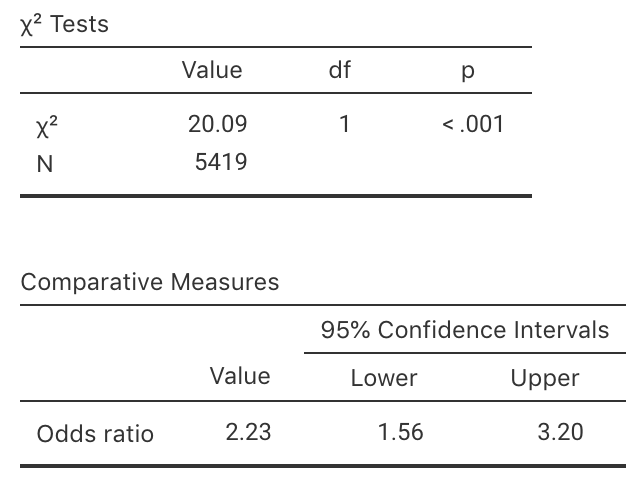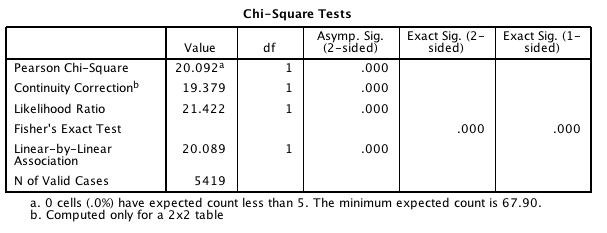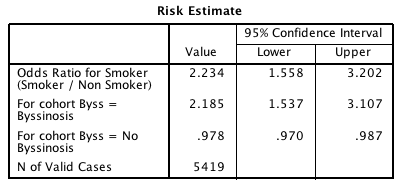10.10 Optional: Tests for ORs
This question is optional; e.g., if you need more practice, or you are studying for the exam.
(Answers available in Sect. A.10)
A study (Higgins and Koch 1977) studied byssinosis (a respiratory complaint) among workers in the textile industry. The researchers were interested, among other things, in exploring the relationship between smoking status and the presence of byssinosis.
More specifically, they wanted to see if the proportion of smokers with byssinosis was greater than the proportion of non-smokers with byssinosis, among all textile workers.
The researchers used an observational study.
Which one of these is correct as a null hypothesis? Why are the others incorrect?
- The odds of having byssinosis is the same in the sample of smokers and the sample of non-smokers.
- The mean number of workers having byssinosis is the same for smokers and non-smokers.
- The population odds of having byssinosis is the same in among smokers and non-smokers.
Among those randomly selected to appear in the study, \(165\) workers had byssinosis (\(40\) were non-smokers) and \(5254\) did not (\(2190\) were non-smokers).
Construct the two-way table showing the number of workers with byssinosis among smokers and non-smokers.
Compute the sample proportion of workers with byssinosis, among smokers. Then, compute the sample proportion of workers with byssinosis, among non-smokers.
Compute the odds of having byssinosis, among smokers. Then compute the odds of having byssinosis, among non-smokers. What do these odds mean?
Compute the odds ratio comparing smokers to non-smokers. What does this odds ratio mean?
A report states that the odds ratio is not one simply due to sampling variation, and not due to smoking.
Do you agree or disagree? Why?Use the software output in Fig. 10.9 (jamovi) or Fig. 10.10 and Fig. 10.11 (SPSS), to test the hypotheses. Write a proper conclusion to communicate the results.
Are the results likely to be statistically valid? Explain.

FIGURE 10.9: Output from jamovi for the byssinosis example

FIGURE 10.10: Output from SPSS for the byssinosis example

FIGURE 10.11: More output from SPSS for the byssinosis example